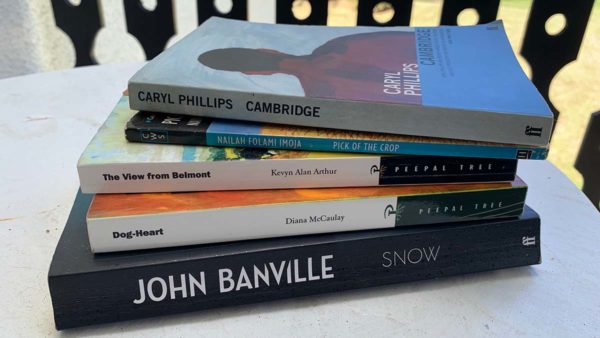I went to the Barbican recently for two exhibitions – Radical Nature and the Free Art Fair. I liked the first more than the second.
The Free Art Fair was a great idea: have am exhibition at the Barbican and give away the work at the end through a random draw. It was ruined, though, by someone’s idea to have a children’s music event in the same space. Young children banging on drums and clashing cymbals made it impossible to enjoy the event or even to look at the art properly. I did like a text piece by Terry Smith capturing the artist’s self-doubt and self-contradictions, many of which I related to. But a lot of it I just couldn’t get into. Perhaps I’m just sore because I didn’t win 🙂
Much better was Radical Nature, an exhibition about “Art and Architecture for a Changing Planet 1969–2009”. It was very varied, with some installation pieces, videos about old projects, photographs, etc., and a bit of a mix of art with activism.
My favourite was Luke Fowler’s video about Bogman Palmjaguar, who has protested strongly against the degradation of his local natural landscape. He has been classified as a paranoid schizophrenic, something he disputes vehemently – but the more violently he protests, the more this is seen as a symptom of his ‘disease’. The video cuts back and forth between images of the man himself and the landscape he’s trying to protect, suggesting a connection between man and nature, between his thoughts and the landscape, perhaps even between the degradation of the landscape and of his own mental state.
There was also a section of rainforest uprooted and left to grow horizontally out of the gallery wall, which looked so incongruous in a bright white gallery space and really made me ‘see’ rainforest depletion in a new way. Also the artist Tue Greenfort had put a frankfurter on the end of a string attached to a camera and left it outside for a fox to find at night. Every time the fox tugged on the frankfurter, he took a picture of himself. The result was a series of funny and surprisingly cute self-portraits, although I could also see the artist’s point about the interaction of urban and rural/natural and artificial.
A series of photos of the trans-Alaska oil pipeline was interesting, but struck me as just straight documentary and not very ‘artistic’. Similarly a piece about how the degradation of coral reefs removed a vital natural defence against the 2004 tsunami and greatly worsened the impact – it was fascinating, but the sort of thing I’d expect to see on BBC TV, not in an art gallery. Other pieces, as usual with an art exhibit, I simply didn’t get at all – e.g., a set of tubs with kohlrabi and other vegetables growing in it was not art to me, even if it was in an art gallery.
There were videos and photos describing large-scale Land Art projects, like Robert Smithson’s Spiral Jetty in the Great Salt Lake. I also loved the images of New York’s Battery Park City as a wheat field – this was after it was created as a landfill using earth from the World Trade Center construction, but before it became a residential neighbourhood. The artist Agnes Denes somehow managed to plant two acres of wheat there in 1982. I lived in Battery Park City myself from 2000 to 2001, so it was quite astonishing to see acres of bright yellow wheat in place of the apartment buildings I know so well, and with the dense concrete and glass of the World Trade Center and Wall Street just behind it.


